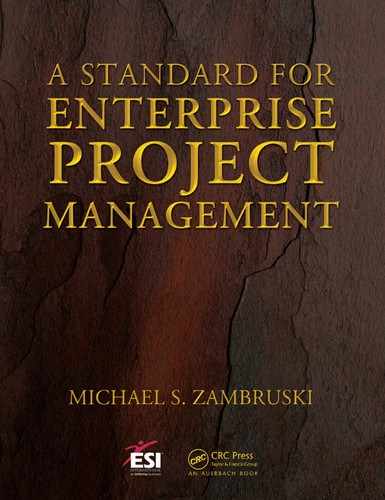Appendix 10
Statement of Work Template
Statement of Work

1. Project Description
1. Goal—summary of how the project will achieve the formally documented business requirements, to include a description of the following:
a. Business strategic goal(s) and objective(s) supported by this project—if there are none, then the legitimacy of the project should be questioned and explained.
b. Significant risks—Any enterprise-level factors (such as cempetition, regulations, economics, etc.) jeopardizing project success.
2. Approach—high-level explanation of how the project will be organized and managed, with specific reference to the processes that will be followed, such as:
a. Normal application of the Standard for Enterprise Project Management, with careful, deliberate completion of the supporting documents in the Attachments section of this Statement of Work.
b. Crisis application of the Standard for Enterprise Project Management, with a justification for the time sensitivity, its impact on team members’ priorities, and the effect of accelerated progress on quality.
c. Application of prior lessons learned, including the approaches, techniques, or improvements to be applied to this project based on experience in past projects.
3. Tactics—a list of key steps needed to initiate and control the project, for example, formulate project team, prepare preliminary plans, conduct kick-off, convene regular status meetings, etc. If this is a crisis, details of how it will be managed should appear here.
4. Priorities—a high-level list of deliverables for this project, shown in order of priority (with details provided in the comprehensive project plan/schedule at Attachment C).
5. Milestones—specific points in time targeted for measuring project progress.
6. Out of scope—clear statement of what is not included in this project.
2. Project Team

3. Success Criteria
a. Key deliverables—details of tangible, measurable results that are to be achieved as a result of this project.
b. Traceability to Business Requirements Document (BRD)—correlation between each deliverable and the corresponding need stated in the BRD. An example is shown below:
Business Requirement |
User Requirement |
Project Deliverable |
B-1. Improve competitive position by providing unusually superior service to customers after they complete a purchase. |
U-1. Customer service reps (CSRs) must provide direct person-to-person support when customers contact the company for any post-purchase reasons. |
S-1. Implement the new customer service processes and support systems by the summer of 2007 with a budget of $1.31 million. |
c. Quality metrics—measurable and testable characteristics that serve as customer acceptance criteria for each deliverable.
4. Assumptions
The source and reliability of each assumption should be included here.
5. Constraints
This includes the source and contact information for each constraint (budget, scope, schedule, quality).
6. Change Control Process
The formal, documented process that includes all stakeholders whenever formal or informal changes to scope, budget, schedule, or acceptance criteria are proposed. The Standard for Enterprise Project Management contains a Project Change Request Form template to facilitate this process (Appendix 20).
Attachments
A. Business Requirements Document
B. Project Budget Details—to include R.O.I., payback period, cost-benefit analysis, expense reduction, revenue improvement, make-buy analysis, opportunity cost, etc., as appropriate.
C. Project Plan/Schedule
D. Risk Management Plan
E. Risk Log
F. Escalation Policy
G. Communications Plan
H. Documentation Protocol
I. Test Strategy
J. Training Strategy
Approvals
Authorized Approver Name: |
Approver’s Department |
Date Approved: |
Executive Sponsor |
<electrronic record – e.g., email–is acceptable> | |
Supporting Organizations(s) |
<electrronic record – e.g., email–is acceptable> | |
Project Manager |
<electrronic record – e.g., email–is acceptable> | |
Other … |
<electrronic record – e.g., email–is acceptable> | |
Other … |
<electrronic record – e.g., email–is acceptable> | |
